We care deeply about helping create and support high-quality schools across Idaho. It doesn’t matter to us whether they’re private, charter public, or district innovation. We are committed to what we call the ‘20 in 10’ strategy; creating 20,000 new high-performing Idaho school seats in 10 years (2024). This is why we seek out, vet, and support innovative leaders and high-performing school models; ‘20 in 10’ schools are quality by design. Quality is our focus, because quality is what counts. In other words, Bluum is governance-neutral. We support promising models with technical assistance, grant funding, talent recruitment and development, help securing a facility – anything it takes to provide more Idaho children with a world-class education.

Of the 13 schools in our cohort, we want to introduce three new schools we’re supporting; two that opened in August 2017, and one that will open in 2018. Taken together, they embody the Bluum theory of action. One is a private Catholic school in Meridian. Another is a new charter public school located in Garden City. The third is an innovation school, meaning it is part of the Nampa School District, but operating with charter-like autonomy.
All three schools offer unique educational models that we believe will serve Idaho children well. What’s more, they are all replicable, so that once they’ve demonstrated a record of success, they can open new campuses elsewhere in the state.
These are homegrown models and an important part of the story. Bluum is open to supporting national charter management organizations with proven track records that wish to operate in Idaho. Programs developed locally, whose founders have a deep understanding of the culture of our state and the needs of its children, are the best possible leaders for a new generation of excellent schools. Finally, all three schools have a deep commitment to serving a diverse student body. They seek out and welcome children of all ethnic, religious, and socioeconomic backgrounds.
Here’s a quick introduction to the three schools:
St. Ignatius Catholic School
Located within the boundaries of the West Ada School District, Idaho’s largest, St. Ignatius opened in the fall of 2017 with 410 students in pre-kindergarten through eighth grade. Ultimately, the school will educate 488 pre-K-8 students. St. Ignatius, connected to the Holy Apostles parish, is the first new Catholic school to open in the Treasure Valley in more than 50 years. STEM education — which focuses on science, technology, engineering, and math, is an increasingly popular model. The STEAM model adds arts to the mix. But St. Ignatius takes this one step further. Principal Andi Kane describes her school model as STREAM, with the ‘R’ standing for religious education, a key component of a St. Ignatius education. St. Ignatius is a high-tech school that develops 21st century skills while grounding its instruction in religious, moral, and ethical teachings that date back two millennia.
Treasure Valley Leadership Academy
Treasure Valley Leadership Academy (TVLA) is a new, small innovation high school in the Nampa School District which launched in August 2017 with a class of 40 ninth-graders. It will add a grade each year until it is a four-year, 600-student high school by 2022. Innovation schools are new to Idaho, the result of a law passed in March 2016 that allows school districts to grant schools “flexibility from laws and policies that impede local autonomy, allowing them to be agile, innovative and empowered to adopt to local circumstances.” When Nampa’s school board approved TVLA and one other innovation school in mid-2016, then-superintendent David Peterson hailed the moment as important not only to the District but to the entire state of Idaho.
Future Public School
Future Public School’s opening day is set for late August 2018, but its two leaders are busy preparing for a smooth opening. At maximum capacity, Future Public School will enroll 576 students in grades K-8. It plans to open with 256 students in kindergarten through third grade, adding a grade each year thereafter. It will be located in Garden City, within the boundaries of the Boise Independent School District. Future Public School will draw from an area with a large population of low-income, diverse students and families, which aligns with its mission and vision to provide more equitable educational opportunities for all students. Like TVLA, Future Public School will feature student-centered learning. “Students learn with authentic, engaging projects in comfortable, personalized learning environments. Time and space are flexible,” is the way school founders Amanda Cox and Brad Petersen describe their approach.
’20 in 10′ Partner Schools
Table 1 provides the current ‘20 in 10’ list of schools, by school type, by year they joined the cohort, their grant support amount, and the number of new seats they are committed to opening. Highlighted schools have completed their expected growth and have concluded their ‘20 in 10’ grant support; they are the first ‘20 in 10’ alumni.
All told, these partner schools have committed themselves to providing over 5,975 new school seats, and as a collective have garnered commitments of about $12.75 million in direct grant support from the J.A. and Kathryn Albertson Family Foundation. As a cohort, these schools have also received an additional $1.7 million in total grant support from the Charter School Growth Fund, Louis Calder Foundation, New School Venture Fund and 4.0 Schools. Several of these schools have worked with the nonprofit Building Hope to construct $50 million in new or renovated buildings in Pocatello, Nampa, Meridian, Boise and Idaho Falls.

Building Hope
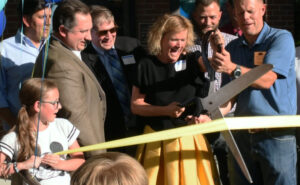 Effective schools need quality school facilities to support their academic mission, and to meet the needs of their students. Facilities are a major pain point for Idaho’s charter public schools. While charter public schools in Idaho receive all state and federal dollars afforded district public schools, they do not have access to local levy or bond dollars. Thus, the typical charter public school in Idaho receives about $1,490 less per pupil than district public schools. To tackle the facility challenge for ‘20 in 10’ schools, Bluum is partnering with Building Hope, a national, nonprofit lender and turn-key real estate developer. Building Hope is expert at delivering state-of-the-art educational facilities to charter public school students across the country. In 2017, Building Hope, with Bluum staff providing financial analysis and underwriting support, launched three Idaho facility projects totaling about $25 million. In total, about 110,000 square feet of new school space will allow Future Public School, Gem Prep: Nampa, and Gem Prep: Meridian to educate over 1,700 Idaho students. Building Hope has led ‘20 in 10’ partner schools in developing their architectural plans, identifying appropriate locations, securing project financing, and managing design and construction phases. Dru Damico, Vice President for Real Estate Development says,
Effective schools need quality school facilities to support their academic mission, and to meet the needs of their students. Facilities are a major pain point for Idaho’s charter public schools. While charter public schools in Idaho receive all state and federal dollars afforded district public schools, they do not have access to local levy or bond dollars. Thus, the typical charter public school in Idaho receives about $1,490 less per pupil than district public schools. To tackle the facility challenge for ‘20 in 10’ schools, Bluum is partnering with Building Hope, a national, nonprofit lender and turn-key real estate developer. Building Hope is expert at delivering state-of-the-art educational facilities to charter public school students across the country. In 2017, Building Hope, with Bluum staff providing financial analysis and underwriting support, launched three Idaho facility projects totaling about $25 million. In total, about 110,000 square feet of new school space will allow Future Public School, Gem Prep: Nampa, and Gem Prep: Meridian to educate over 1,700 Idaho students. Building Hope has led ‘20 in 10’ partner schools in developing their architectural plans, identifying appropriate locations, securing project financing, and managing design and construction phases. Dru Damico, Vice President for Real Estate Development says,
“Building Hope is dedicated to providing quality, innovative facilities to Idaho students, and this is demonstrated through these three current projects. We are proud to partner with Bluum and the J.A. and Kathryn Albertson Family Foundation.”

Future Public School in Garden City (left) is a project design unique to Idaho, with a 3-story urban design that is integrated into the community around it. At full enrollment Future will serve 576 students in grades K-8. Gem Prep: Nampa (right) focuses on shared space to provide maximum flexibility for student learning. At full enrollment Gem Prep: Nampa will educate 582 students in grades K-12. Gem Prep: Meridian transitions a previously built educational facility into a hub for innovative blended learning. At full enrollment Gem Prep: Meridian will educate 582 students in grades K-12. Previous Building Hope projects in Idaho include: Alturas International Academy, Vision Charter School, Sage International School, and Connor Academy.
Year Two Academic Results for ’20 in 10′ Cohort Students
In the early stages of the ‘20 in 10’ program the academic performance of the students in these schools has been solid. However, it is important to note we only have two years of data. Some of these schools are adding significant numbers of new students and new grades each year, and there are limitations in both the state data due to redaction rules that impact certain grades and subjects, and the Northwest Evaluation Association’s Measure of Academic Progress (MAP) data, since we don’t test all grades in every school. With these limitations in mind, students in ‘20 in 10’ charter public schools outperformed state public school averages on the Idaho Standards Achievement Test (ISAT) by significant margins in both 2016 and 2017 (Graph 1). As these schools grow and add more students we have seen a decline in the overall ISAT test scores for both ELA and math from 2016 to 2017. This is to be expected as these schools add dozens or hundreds more students; there is an adjustment period as they work to bring these additional students into a new academic culture and instructional program.

A portion of students in ‘20 in 10’ schools participate in NWEA MAP assessments in both math and reading, which is a national measure taken by over 8 million students yearly. In 2016-17, there were 2,719 students in ‘20 in 10’ schools that took the MAP assessment in math and 2,704 who tested in reading (Graph 2). These students outperformed national averages on MAP by 29 or more percentile points in math and 34 or more percentile points in reading. Graph 2 shows how these students performed on the NWEA Map nationally normed assessment.

Year Two Academic Results by School
 Alturas International Academy
Alturas International Academy
School Type: Charter Public
Location: Idaho Falls
Grades Served: K-8
’20 in 10′ Investment: $1,000,000 over five years
’20 in 10′ Impact: 538 new seats
About the School: Alturas International Academy promotes academic distinction, while empowering students to be principled and intellectual leaders as they explore, create, investigate, and analyze in a safe, engaged, collaborative environment that inspires them to make a genuine difference in their local and global community. Chartered only two years ago, Alturas has grown rapidly.With ‘20 in 10’ support and working closely with Building Hope, Alturas renovated and now occupies the historic O.E. Bell Building, a former district school building located in the heart of downtown Idaho Falls. This building allows Alturas to recruit and serve a diverse group of students. According to the founder, Michelle Ball, “Parents in the area didn’t even know their kids could go to a charter; that it’s a public school. Being in this location allows us to better communicate with these parents and help them understand how to enroll.”
“I’ve been here for two years, and it’s been really fun watching the school evolve. I think this has been a great opportunity to turn this building back into a school.”
– Matt, Alturas Student, 7th Grade

 Compass Public Charter School
Compass Public Charter School
School Type: Charter Public
Location: Meridian
Grades Served: K-12
’20 in 10′ Investment: $1,093,220 over four years
’20 in 10′ Impact: 478 new seats
About the School: Compass was opened in 2005 with the mission of preparing students for life-long excellence through exceptional academics, character development and the ability to define and defend a personal worldview. Compass is annually one of Idaho’s highest performing public schools, and was ranked in the top five of all Idaho high schools on the 2017 SAT. The number of Compass students meeting both math and reading college ready benchmarks on the test exceeded the state average by more than double – 86% of Compass students vs. 32% statewide.
“It is rare to find a team of administrators, teachers and families who are willing to invest themselves so heavily, care so deeply, and are committed to upholding a spirit of excellence. Our four kids have been blessed beyond measure over the years. I am grateful to be a Compass parent!”
– Becca, Compass Parent

 Gem Innovation Schools
Gem Innovation Schools
School Type: Charter Public Network
Location: Nampa, Pocatello, Meridian, & Statewide Virtual
Grades Served: I-DEA K-12; Gem K-4 in 2016-2017, K-12 by 2022-23
’20 in 10′ Investment: $4,601,500 over five years
’20 in 10′ Impact: 478 new seats
About the Schools: Gem Innovation Schools is Idaho’s first home-grown charter management organization. Founded in 2004 as the Idaho Distance Education Academy (I-DEA), a K-12 online school, Gem Innovation launched its first brick-and-mortar school, Gem Prep: Pocatello in 2014. Gem Prep: Nampa launched in 2016, and Gem Prep: Meridian will begin serving students in Fall 2018. Gem’s brick-and-mortar schools follow a unique blended learning model; a ‘station rotation’ format, in which students move through three different stations during a 90-minute block. Each station uses a different learning method; computer-adaptive software, direct instruction from the teacher, and the third station varies from day-to-day. It can include independent work, additional small group work, or extra tutoring.
“This school has been amazing for my boys. All the teachers truly care about every student
succeeding and individualize their learning. I have one child who gets to be challenged while
the other who struggles is supported. Love this school.”
– Nicole, Gem Prep Parent

 Grace Lutheran School
Grace Lutheran School
School Type: Private Religious
Location: Pocatello
Grades Served: Pre-K-8 in 2016-17; K-12 by 2019-20
’20 in 10′ Investment: $250,000 over three years
’20 in 10′ Impact: 300 new seats
About the School: Grace Lutheran has been operating a K-8 school for 60 years. Using ’20 in 10′ support, the school added a high school in August of 2016. The school’s mission is “to engage students and their families with excellence in every facet of their education; equip students with the highest levels of skills in multiple disciplines which will propel them to be effective in their future vocations and in all of life.” Grace Lutheran is part of a nationwide network of Lutheran schools and universities. It has a long track record of educational excellence. Additionally, the school provides scholarships for roughly 30 students annually to provide opportunities for a diverse population of students.
“In order for a parent to make an informed decision about the best school for their child they should visit a number of schools. For many, Grace Lutheran will be the school of
choice. I’ve personally met the staff, seen the expectations of students, and have full confidence that GLHS will deliver on its promises.”
– Gabe, Grace Lutheran Parent

 Idaho Arts Charter School
Idaho Arts Charter School
School Type: Charter Public
Location: Nampa
Grades Served: K-12
’20 in 10′ Investment: $1,546,230 over four years
’20 in 10′ Impact: 582 new seats
About the School: Idaho Arts Charter School (IACS) is Idaho’s premier K-12 public arts academy. Elementary school students take part in general arts education in music and dance, and complete three thematic units or “storylines” each year that fold art into social studies, science and reading instruction. Secondary students specialize more deeply in specific arts education (e.g., piano, percussion, electric orchestra, artistic dance) and have multiple opportunities to perform. Students may compete in their chosen art, ranging from performances at the school’s annual Fall Festival to state, regional, and national dance and orchestra competitions. Utilizing ‘20 in 10’ support, Idaho Arts constructed a new 37,000 square foot elementary school with dedicated studios for dance, music and visual arts. The success of this model is illustrated in their SAT scores; 43% of IACS students meeting both math and reading college ready benchmarks on the test exceeded the state average by 11%, as compared with only 32% of students statewide meeting both benchmarks.
“I couldn’t be happier with the way my children are growing and learning through the arts. They are offered so many wonderful opportunities and
experiences that I have never seen in any other school!”
– Lydia, IACS Parent

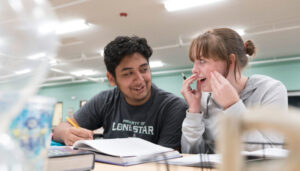 Pathways in Education – Nampa
Pathways in Education – Nampa
School Type: Charter Public
Location: Nampa
Grades Served: 9-12
’20 in 10′ Investment: $775,000 over two years
’20 in 10′ Impact: 300 new seats
About the School: Pathways in Education (PIE), while new to Idaho, is a well-established education provider that has helped high school students who have dropped out, or are at risk of dropping out, get back on track to graduation in California, Illinois, and Tennessee. Pathways blends in-person instruction and assessment with independent study to provide a flexible and supportive learning environment. Pathways Nampa Principal Susan Lux explains, “The teachers at PIE understand and believe in the vision and mission of our school. The staff builds individual learning plans for each of their students, and assists them in developing individualized goals based on these plans.” Pathways in Education: Nampa launched as a new school in the Fall of 2017 and does not yet have annual performance data. Data will be gathered and provided in subsequent years.

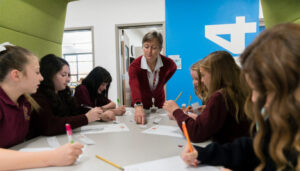 St. Ignatius Catholic School
St. Ignatius Catholic School
School Type: Private Religious
Location: Meridian
Grades Served: Pre-K -8
’20 in 10′ Investment: $1,100,000 over three years
’20 in 10′ Impact: 488 new seats
About the School: In August, Holy Apostles Church opened the doors of St. Ignatius Catholic School, the first new Catholic School in the Treasure Valley in over 50 years. The Holy Apostles Church community demonstrated strong support for the vision of the school by raising over $11 million to fund the construction of a state-of the-art school building. ‘20 in 10’ grant funds supported the St. Ignatius Catholic School team in the development of a blended, inquiry-based approach that also incorporates elements of project-based learning, STEM, flexible instructional groupings and multi-aged classrooms. While the Ingatian education model builds on traditions going back centuries, the St. Ignatius Catholic School model is likely the first in the country – certainly in Idaho – to fully embrace core concepts associated with 21st century learning. St. Ignatius Catholic School launched as a new school in the Fall of 2017 and does not yet have annual performance data. Data will be gathered and provided in subsequent years.

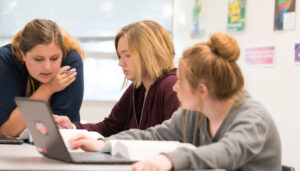 Treasure Valley Leadership Academy
Treasure Valley Leadership Academy
School Type: District Innovation
Location: Nampa
Grades Served: 9th in 2017-18, 9-12 by 2020
’20 in 10′ Investment: $1,00,000 over two years
’20 in 10′ Impact: 600 new seats
About the School: Treasure Valley Leadership Academy (TVLA) is Idaho’s first innovation high school. It operates in the Nampa School District. Innovation schools are new to Idaho, the result of a law passed in March 2016 that allows up to ten public schools a year to receive flexibility from laws and policies that impede local autonomy, allowing them to be agile, innovative and empowered to adapt to local circumstances. TVLA launched at the start of the 2017-18 school year with a class of 40 ninth-graders. It will add a grade each year until it is a four-year, 600-student high school. The school is committed to allowing students to be pace-setters of their own learning experience through a mastery-based model that utilizes information technology to question the concepts of seat-time, student advancement by age, use of staff and even hours of operation. Treasure Valley Leadership Academy launched as a new school in the Fall of 2017 and does not yet have annual performance data. Data will be gathered and provided in subsequent years.

Idaho New School Fellows
The Idaho New School Fellowship targets Idaho’s neediest students (those attending schools with 70 percent or greater free and reduced-price lunch rates) by providing educational leaders with the advanced leadership training and local expertise needed to launch a successful school. Idaho New School Fellows are empowered to plan, develop and launch a high-performing public school in an underserved Idaho community.
Matt & Monica – Elevate Academy
In July of 2017 the second cohort of Idaho New School Fellows was selected. Monica White and Matt Strong are outstanding veteran educators who are widely recognized for their innovative, community oriented efforts that benefit at-risk students. They resigned from their positions in the Caldwell School District after a decade of service to launch Elevate Academy in 2019. They are committed to creating a system of excellence for traditionally underserved students through a career technical education charter public school model. Partnering with local industry, Elevate Academy intends to train and create a pipeline of highly-skilled, employable workers that meet the needs of Idaho industry and business. Elevate Academy students will be exposed to college-readiness and dual-credit opportunities through local community college partnerships.
Brad & Amanda – Future Public School
Selected in 2015 from a pool of 44 applicants from 13 states, the 2016 Idaho New School Fellows are now into year two of their Fellowship. Hours of travel, research, networking, planning, and passion through the first year of their Fellowship have yielded a school model as unique as the Garden City community it will serve. The newly-chartered Future Public School will open its doors to students in August of 2018. The school will draw from an area with a large population of low-income, diverse students and families, which aligns with its mission and vision to provide more equitable educational opportunities for all students. During their summer pilot, 86% of their students qualified for free or reduced-price lunch. Future will offer meal and transportation service, since these two factors are economic barriers to school choice for families who have lower household incomes. Woven within the strong, STEM-focused academic foundation are the human themes of identity, diversity, equity, and action. Brad and Amanda know that these values help the students feel heard, seen, and included, which in turn creates a learning environment that is respectful, curious, and joyful.
Lessons Learned
Bluum engaged the independent education research group Education Northwest to generate an external evaluation of our work on the ’20 in 10′ effort. Key takeaways from that report include:
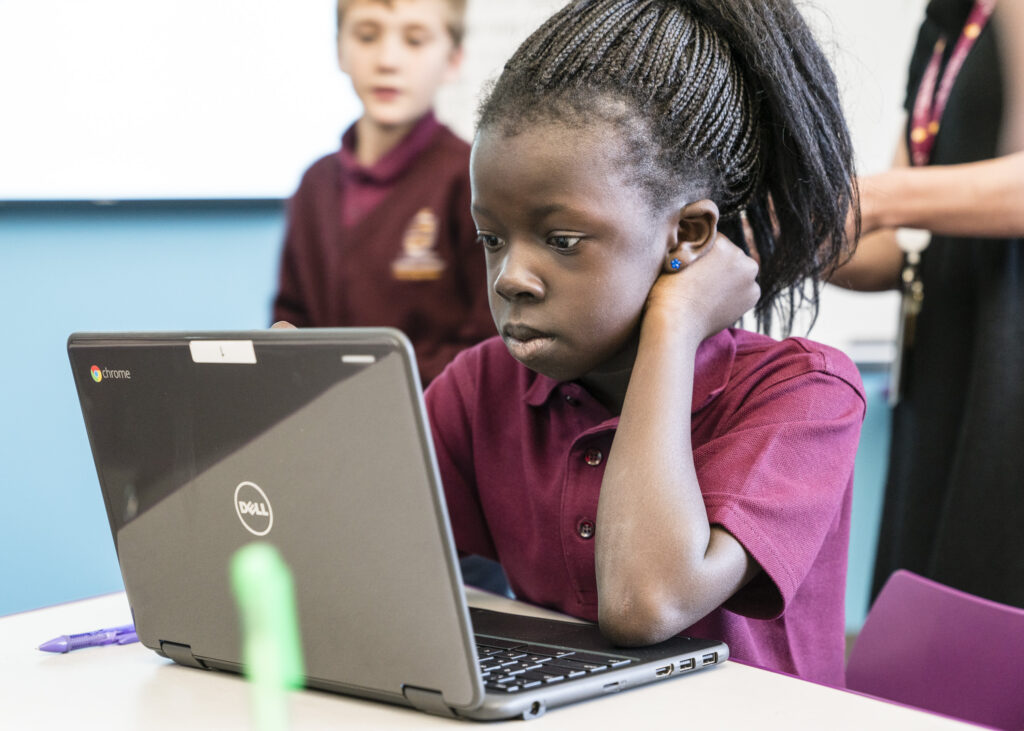
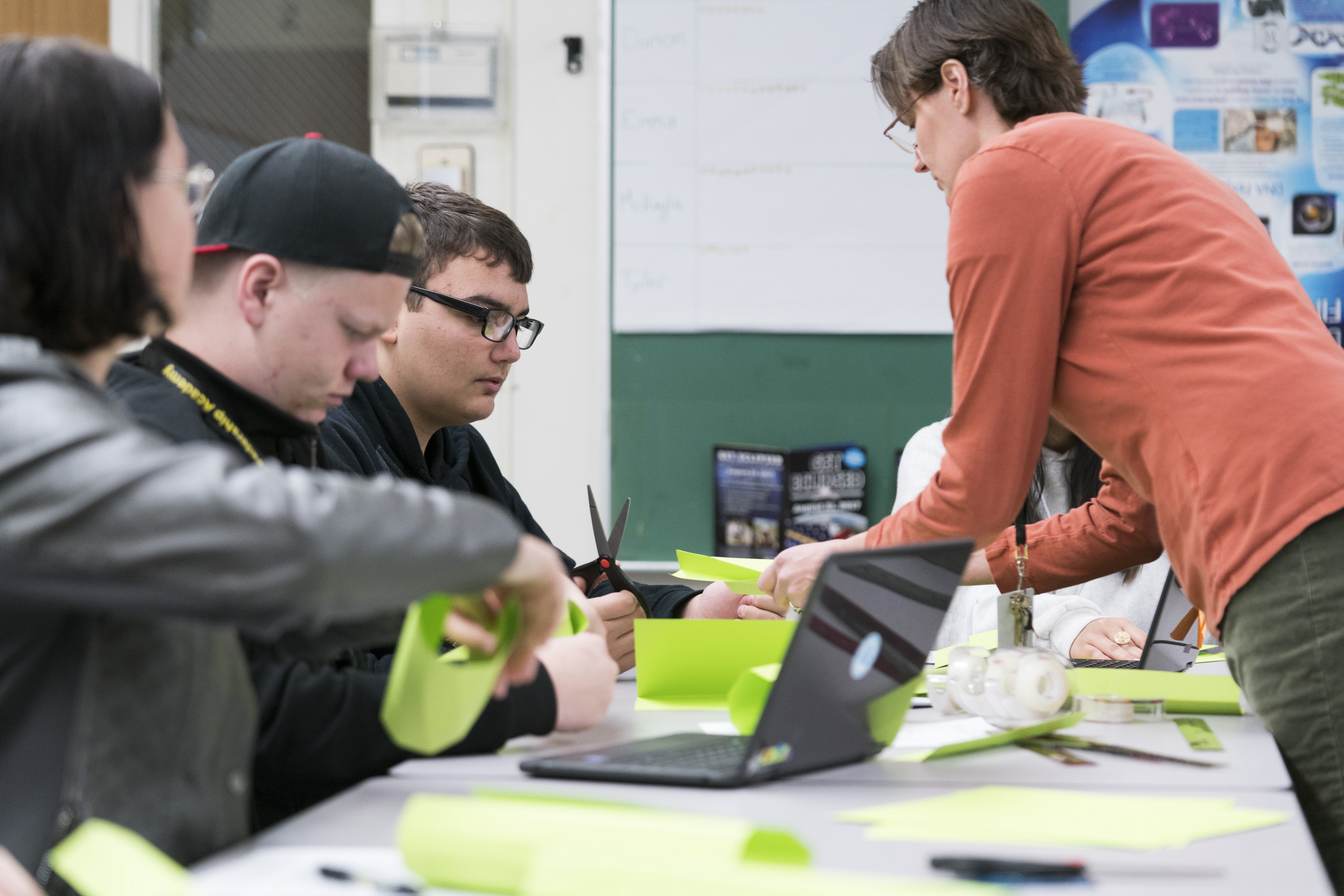
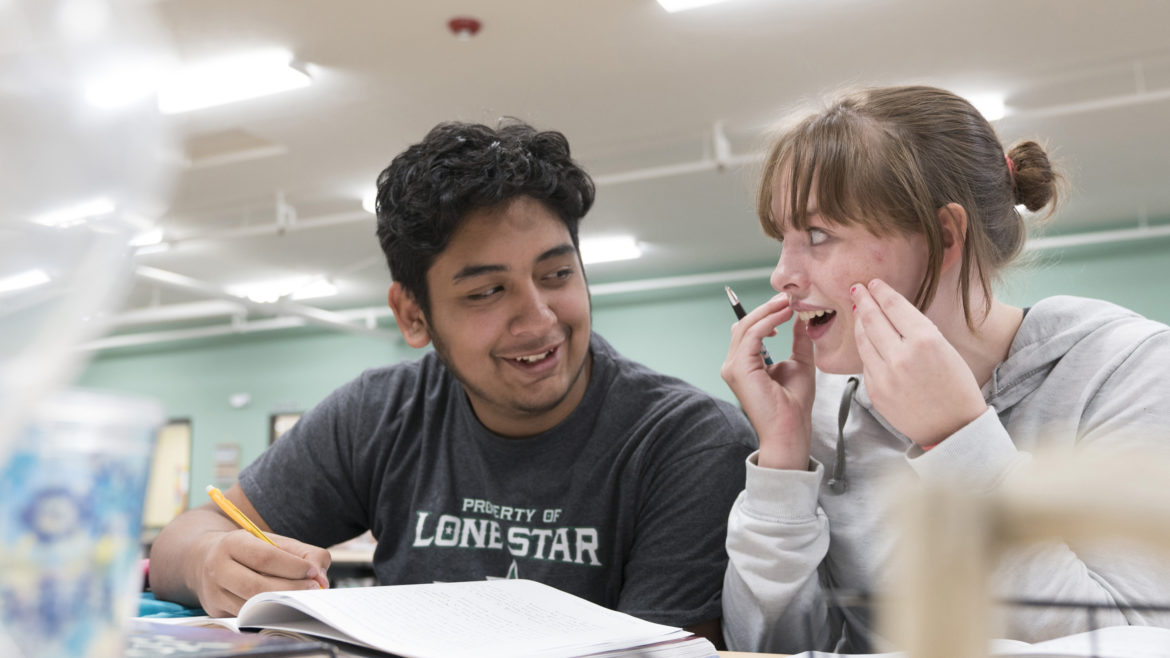
Looking Ahead
Education Northwest’s evaluation of Bluum’s work with schools provides key insight into larger trends running through the ‘20 in 10’ effort. So does the student achievement data, which provides some insights but leaves questions unanswered. In fact, it actually generates more questions like:
• How can we best use student achievement data to track the impact of ‘20 in 10’ schools on their students over time?
• Along with test scores, what other indicators of success and achievement should we measure?
• How do we do this in ways that don’t take valuable time from educators and students, but actually add value to their work?
Our work is generative, and we are still very much at the beginning of the ‘20 in 10’ strategy. This report is a way to provide public accountability for what we are doing, to document the lessons learned, and to highlight and share some of the issues and concerns that we, in partnership with the schools, seek to address in coming months and years.
We share this report humbly and always appreciate feedback from you, the reader. How can we do this work smarter? Are there questions we should be asking but aren’t? We look forward to finding more leaders, models, and innovations that further our effort to create schools that are quality by design.
“We look forward to finding more leaders, models, and innovations that further our effort to create schools that are quality by design.”






